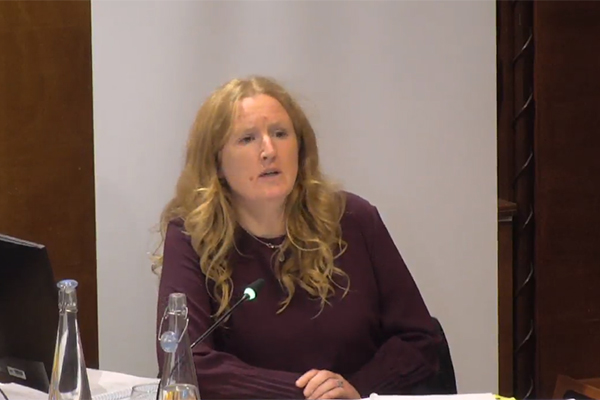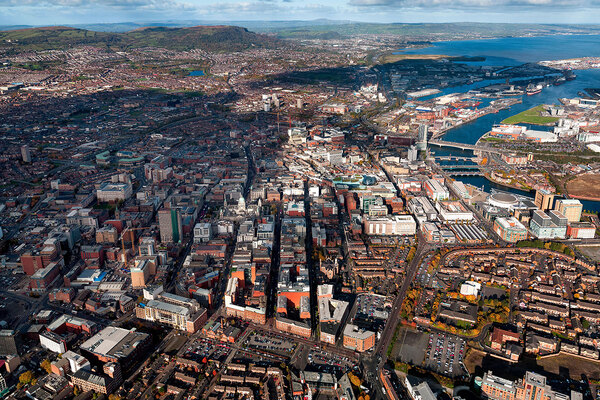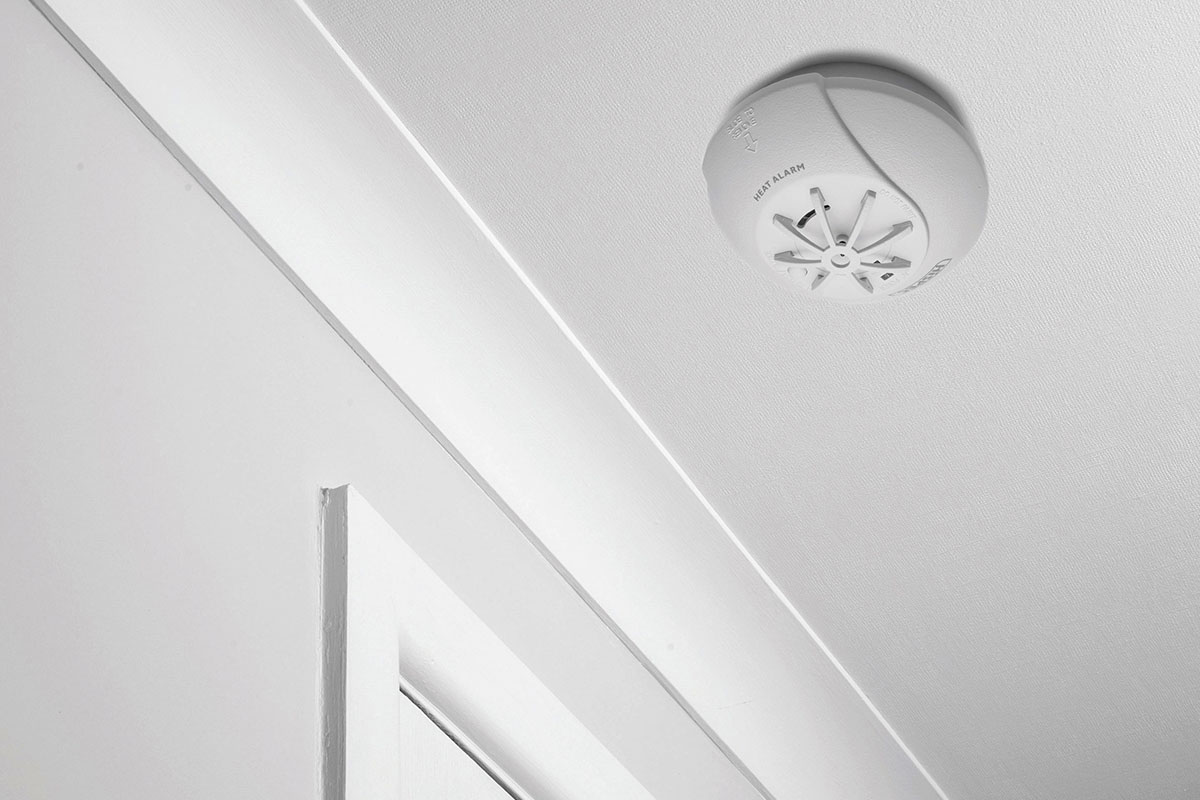You are viewing 1 of your 1 free articles
Grenfell Inquiry day 78: insulation and cladding materials ‘below required standards’
The various insulation and cladding materials used on Grenfell Tower was up to five grades lower than it should have been to comply with the basic standards of building guidance, an expert has said.
Dr Barbara Lane appeared before the inquiry today to discuss her lengthy expert report into the blaze.
Insulation is required under Approved Document B to be of ‘limited combustibility’, or European Class A2, or be part of a system which has been cleared under a test known as BS 8414.
Dr Lane said that the insulation used on most of the building – Celotex RS5000 – was of European Class D – three grades lower than the standard required.
Dr Lane said she had seen no evidence from a test which could allow the insulation to comply.
She said that insulation products used within the window construction was Class F and Class E respectively – five and four grades below A2.
Dr Lane said that while Approved Document B was not clear on the standard required for windows, she believed it should be required to be limited combustibility.
The cladding meanwhile, aluminium panels with a polyethylene core manufactured by Arconic and branded Reynobond 55PE, was a European Class E, she said.
Significantly, she said the cladding was required to be a lower standard than the insulation by building guidance – Class 0 or Class B rather than limited combustibility or Class A2.
This is an interpretation which is common in the industry but government sources have vigorously resisted since the fire.
Reynobond PE was given a British Board of Agrément (BBA) certificate rating it as Class 0 or Class B, leading some to believe it would comply with this requirement, but Dr Lane has said this certificate itself was “factually incorrect”.
Among other things, she explained to the inquiry today that this was because a cassette system (as used on Grenfell) had not been tested to support the findings of the certificate.
She said: “At Grenfell Tower specifically we have a cassette system, and I have seen no test evidence where a cassette system performs to the requirement of Approved Document B.”
Dr Lane was also asked whether ‘mineral wool’ insulation products – widely seen as a non-combustible alternative to plastic foam insulation – could be considered combustible, a question she responded to firmly.
She said: “Do I have to answer that question? Mineral wool is non-combustible, the binders used to pack it together are combustible. But I find those arguments quite trite when one compares mineral wool with a polymeric foam of equal thickness. I understand that nearly everything in the world can burn but in the context of construction, I like to keep things appropriate and relevant and understand that a mineral wool is substantially less combustible and typically defined as non-combustible.”
She also rejected the use of post-Grenfell BS 8414 tests, commissioned by the government, to compare the performance of mineral wool and plastic insulation. She said: “I don’t take anything from those tests because I don’t consider them to be relevant because they are so far away from the kind of construction detailing that people like me have to deal with in our profession.”
Dr Lane promised a “detailed chapter” on this issue in a further report for phase two of the inquiry, should it be required.
The inquiry continues.
The Grenfell Tower Inquiry
Closing statements
Day 85: victims' lawyers attack the fire brigade
Further expert evidence
Including some additional evidence from emergency call handlers, bereaved and relatives
Day 84: further evidence from survivors and relatives
Day 83: swift evacuation of tower possible if residents alerted
Day 82: initial fire was extinguished but then returned to the flat
Day 81: overheating fridge-freezer most likely cause of fire
Day 80: fire doors installed did not match product tested
Day 79: resident advised to stay put despite fire in flat
Day 78: insulation and cladding material below required standard
Day 77: molten plastic spread blaze down tower
Day 76: 'stay put' should be dropped when fire spreads across floors
Other witness evidence
Police, ambulance, gas suppliers, council, TMO and call room operators give evidence
Day 75: call room operators give evidence
Day 74: further evidence from TMO officers
Day 73: TMO boss failed to pass information to firefighters
Day 72: fire finally extinguished when gas switched off
Day 71: further questions over stay put advice
Day 70: the police evidence
The bereaved, survivors and relatives’ evidence
Day 69: video shows smoke billowing through fire door
Day 68: KCTMO removed self closing mechanism and never replaced it
Day 67: gaps in cladding fixed with duct tape
Day 66: 'don't fix broken system with a sticking plaster'
Day 65: survivor dragged disabled man down nine floors to safety
Day 64: KCTMO 'did not replace broken fire door'
Day 63: foam insulation inside cladding 'exposed' says survivor
Day 62: father gives harrowing account of son's death
Day 61: council’s management organisation slammed for faulty electrics
Day 60: stay put advice ‘led to deaths’, residents say
Day 59: residents describe problems with new windows
Day 58: survivor describes how daughter saved his life
Day 57: firefighter evidence ‘a slap in the face’, says survivor
Day 56: relations with contractor were ‘toxic’
Day 55: resident 'never happy' with stay-put advice
Day 54: tenant gives evidence about housing association
Day 53: stay put advice 'felt like trap'
Day 52: resident saved by son's phone call
The firefighters’ evidence
Day 51: firefighter feared encouraging residents to jump
Day 50: the LFB commissioner
Day 49: fire chief reveals frustration over lack of building plans
Day 48: internal fire spread 'bigger story' than cladding
Day 47: fire officer considered evacuating crews over building collapse fears
Day 46: 'we were improvising' senior firefighter admits
Day 45: firefighter urged for abandonment of 'stay put' policy
Day 44: firefighter recalls radio signal difficulties
Day 43: call hander 'uncomfortable' with insisting residents stay put
Day 42: residents only told to leave if they called fire brigade back
Day 41: breathing equipment delay 'hampered rescues on upper floors'
Day 40: chiefs told firefighters to abandon policy
Day 39: firefighters reveal dramatic rescue of children
Day 38: firefighters issue aplogies to families
Day 37: council 'unable to provide tower plans'
Day 36: QC defends inquiry process
Day 35: Javid would welcome interim recommendations
Day 34: water from hose 'too weak' to reach the flames
Day 33: 'oh my god, we've been telling people to stay put'
Day 32: further fire fighter describes lack of equipment and low water pressure
Day 31: 'incredibly difficult' task of recording information outlined
Day 30: struggle to maintain control over rescue operation described
Day 29: fire service 'overwhelmed' by survival guidance calls
Day 28: 'the building beat us'
Day 27: firefighters 'forced to abandon plans to reach roof'
Day 26: poor signage hindered rescue efforts
Day 25: water pressure left firefighting equipment 'like garden hose'
Day 24: decision to abandon 'stay put' explored
Day 23: TV images 'could have assissted' rescue effort
Day 22: description of hectic scenes in the control centre
Day 21: account from the fire service 'nerve centre'
Day 20: firefighter describes 'huge volume' of calls from trapped residents
Day 19: firefighter 'given no training on cladding fires'
Day 18: evacuation would have been 'huge catastrophe'
Day 17: firefighters describe access and lift issues
Day 16: scenes of carnage likened to 9/11
Day 15: firefighters recount trauma of survival guidance calls
Day 14: firefighters describe spread of blaze
Day 13: firefighters recall radio difficulties
Day 12: "it was like a war zone"
Day 11: questions raised over fire fighters' radios
Day 10: watch manager emotional under questioning
Day nine: lead firefighter 'not trained in stay put policy'
The expert reports: authors give evidence to inquiry
Day eight: where the fire started
Day seven: what was in the cladding?
Day six: the cause and spread of the fire
Day five: expert highlights key issues
Day four: firefighters defend response to fire
Day three: council and contractors appear for the first time
Day two: lawyers for the survivors make their case
Day one: expert evidence released on cladding and stay put
The commemoration hearings
30 May: Grenfell Council 'recognised it should not house disabled victim above four storeys'
29 May: Anger on day six of the Grenfell Inquiry
25 May: Grenfell families 'forced to live in chimney with stay put policy'
24 May: Grenfell family complained about father being housed on 17th floor
23 May: Tributes to children on third day of Grenfell hearings
22 May: Emotions run high as Grenfell bereaved shown footage of the tower burning
21 May: Grenfell victims share tributes as inquiry opens









